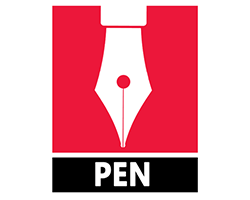Research article | Open Access
International Journal of Innovative Approaches in Agricultural Research 2023, Vol. 7(4) 403-412
Black Carrot Extract Containing Polyvinyl Alcohol-Based Nanofibers: Structural Characterization and Determination of Total Oxidant-Antioxidant Capacity
pp. 403 - 412 | DOI: https://doi.org/10.29329/ijiaar.2023.630.2
Publish Date: December 31, 2023 | Single/Total View: 94/239 | Single/Total Download: 111/291
Abstract
In this study three different electrospun nanofiber samples, named as polyvinly alcohol (PVA), polyvinly alcohol +black carrot extract (PVAB) and polyvinly alcohol+black carrot extract+tin dioxide (PVABT), were produced successfully using the electrospinning method. According to characterization analysis by scanning electron microscopy (SEM), it has been found that PVA nanofibers were continuous and they preserved their uniform structure and average diameters were measured as 215.76±75.47. With the addition of black carrot extract, fiber diameters increased to 637.97±91.85 nm. On the other hand, for PVABT accumulation of new structures observed and diamater thickness increased to 658.66±101.5 nm respectively. Energy Dispersive X-ray Spectroscopy elemental mapping results of PVABT sample proved the binding and integration of the tin dioxide to the surface of the electrospun nanofibers. Antioxidant properties are also compared to determine how nanofiber coating of plant extracts effect on Total Oxidant Level (TOL) ' Total Antioxidant Level (TAL). While the antioxidant level of the black carrot extract covered with nanofiber was ~62% higher than the extract without nanofiber, it was determined that the extract-metal oxide combination showed higher antioxidant results. In addition, no oxidant was detected in electrospun nanofiber samples. Overall, it has been concluded that nanofibers can be fabricated in combination with plant extract and metal oxides and addition of these materials have ability to effect characteristic properties and antioxidant properties. Therefore, metal oxides and plant extracts have the potential to be used as an active food packaging ingredients for further applications in food industry. In the future, it will be important to determine other properties such as thermal stability, mechanical properties, or water vapor permeabilities of these nanomaterials.
Keywords: Black Carrot, Electrospinning, Nanofiber, TAL, TOL
| How to Cite this Article? |
|---|
|
APA 7th edition Harvard Chicago 16th edition |
| References |
|---|
|

